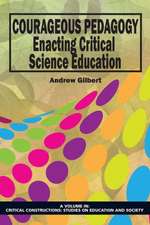Natural History Dioramas: History, Construction and Educational Role
Editat de Sue Dale Tunnicliffe, Annette Scheersoien Limba Engleză Hardback – 15 dec 2014
| Toate formatele și edițiile | Preț | Express |
|---|---|---|
| Paperback (1) | 726.85 lei 6-8 săpt. | |
| SPRINGER NETHERLANDS – 10 sep 2016 | 726.85 lei 6-8 săpt. | |
| Hardback (1) | 732.84 lei 6-8 săpt. | |
| SPRINGER NETHERLANDS – 15 dec 2014 | 732.84 lei 6-8 săpt. |
Preț: 732.84 lei
Preț vechi: 893.71 lei
-18% Nou
Puncte Express: 1099
Preț estimativ în valută:
140.23€ • 146.94$ • 115.92£
140.23€ • 146.94$ • 115.92£
Carte tipărită la comandă
Livrare economică 11-25 aprilie
Preluare comenzi: 021 569.72.76
Specificații
ISBN-13: 9789401794954
ISBN-10: 9401794952
Pagini: 200
Ilustrații: X, 289 p. 50 illus.
Dimensiuni: 155 x 235 x 22 mm
Greutate: 0.59 kg
Ediția:2015
Editura: SPRINGER NETHERLANDS
Colecția Springer
Locul publicării:Dordrecht, Netherlands
ISBN-10: 9401794952
Pagini: 200
Ilustrații: X, 289 p. 50 illus.
Dimensiuni: 155 x 235 x 22 mm
Greutate: 0.59 kg
Ediția:2015
Editura: SPRINGER NETHERLANDS
Colecția Springer
Locul publicării:Dordrecht, Netherlands
Public țintă
ResearchCuprins
Introduction, Sue Dale Tunnicliffe, London (UK) & Annette Scheersoi, Bonn (D).- I. History and Features of Natural History Dioramas.- I.1 History of Dioramas, Claudia Kamcke, Braunschweig, & Rainer Hutterer, Bonn (D).- I.2 Dioramas as historical documents, Rainer Hutterer, Bonn (D).- I.3 A window on the world – wildlife dioramas, Pat Morris, Ascot (US).- I.4 Dioramas as constructs of reality: Art, photography, and the discursive space, Geraldine Howie (UK).- I.5 James Perry Wilson: Shifting paradigms of natural history diorama painting, Michael Anderson, Yale (US).- II. Resurrecting and Modern Dioramas.- II.1 Dioramas in Natural History Museum – Tools for nature conservation, John Borg, Mdina (MT).- II.2 Using technology to deepen and extend visitor’s interaction with dioramas, Mark Loveland, Barbara Buckley & Edys Quellmalz, WestEd (US).- II.3 Displaying Ecological Landscapes by Dioramas - an example provided by Zhejiang Museum of Natural History, Ximin Kang, Zhejiang (CHN).- II.4 Conservative restoration and reconstruction of historical Natural History Dioramas, Mareike Munsch, Hartmut Schmiese, Aleksandra Angelov, Gunnar Riedel & Jörn Köhler, Darmstadt (D).- III. Learning at dioramas.- III.1 Dioramas as important tools in biological education, Sue Dale Tunnicliffe & Annette Scheersoi.- III.2 Catching the visitor’s interest, Annette Scheersoi.- III. 3 Naming and narratives at dioramas, Sue Dale Tunnicliffe.- III.4 The evolution of the narrative at natural history dioramas, Alix Cotumaggio, New York (US).- III.5 Imaginary places: Museum visitor perceptions of habitat dioramas, Phaedra Livingstone, Oregon (US).- III.6 Habitat dioramas and sense of place: Factors linked tovisitors’ feelings about the natural places portrayed in dioramas, Cecilia Garibay & Eric D. Gyllenhaal, Chicago (US).- III.7 The Human connection: Enactors and the facilitated diorama experience, Kathleen Tinworth, Denver (US).- III.8 Storytelling and performance in diorama galleries, Keith Dunmall, Birchington on Sea (UK).- III.9 The diorama as a means for biodiversity education, Martha Marandino, Sao Paolo (Brazil), Marianne Achiam, Copenhagen (DK) & Adriano Oliveira, Sao Paolo (Brazil).- III.10 Interpreting through drawings, Edward Mifsud, Malta (MT).- Conclusion, Michael Reiss, London (UK).
Textul de pe ultima copertă
This book celebrates dioramas as a unique and essential learning tool for biological education for all. It provides information about their historical development, the technique of taxidermy and diorama construction from the past and the modern developments as well as aspects of interpretation and learning processes. The fresh and unique compilation brings together experts from a number of different countries, from the west coast of the USA, across Europe to China. It describes the journey of dioramas from their inception through development to visions of their future. A complementary journey is that of visitors and their individual sense making and construction of their understanding from their own starting points, often interacting with others (e.g. teachers, peers, parents) as well as media (e.g. labels). Dioramas have been, hitherto, a rather neglected area of museum exhibits but a renaissance is beginning for them and their educational importance in contributing to people’s understanding of the natural world. This volume shows how dioramas can reach a wide audience and increase access to biological knowledge.
Caracteristici
First volume to focus on learning from dioramas, an essential learning tool for biological education for all Demonstrates the different ways is which dioramas are used and observed world wide Presents an analysis of visitors’ responses and learning about animals and biodiversity through observation Includes supplementary material: sn.pub/extras



















